| Columns Retired Columns & Blogs |
I've worn them... VERY tight! Lol..
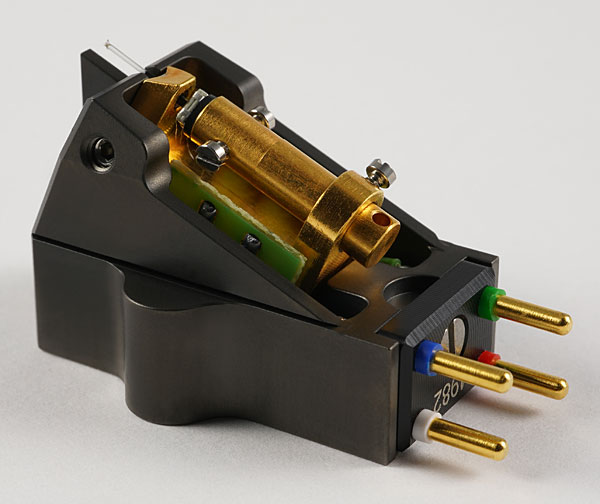
To make the review more broadly applicable, I also auditioned the 128 with a second cartridge. Because of the requirements of moderate output and relatively high impedance (for an MC), finding one in my collection that would work was a bit of a challenge. I found two. One was the X-quisite ST (16 ohms; 0.3mV), also manufactured by HiFiction; the other was the limited-edition Miyajima Labs Madake Snakewood (16 ohms; output a little low at 0.23mV), which, like the X-quisite, I had to buy after I tried it. I decided to use the Madake because the X-quisite performs best with its dedicated step-up transformer.
Heavenly "ether" sound
First up was the JSD Novel Titan. Having gotten acclimated to Verismo into the CH Precision P1/X1 phono preamp, swapping that out for an unfamiliar combo took some acclimation, but it didn't take long to recollect the similarly pristine, velvety sound of the Hovland HP-100 vacuum tube preamp with built-in MC phono preamp that I reviewed and then purchased back in 2000. Who said aural memory is fleeting?
The longer I listened to the Novel–128 combo, the more I appreciated its near-magical sonic attributes and its similarity to the Hovland. The bottom octaves were well-extended and delivered nimble low-frequency transient textures—fingers plucking double bass strings for instance—and yet the 128 would not be my rock'n'roll phono preamp of choice. It doesn't offer brute, gut-socking punch or sufficiently incisive low-frequency transients. It's a sort of sound that, in my experience, is typical of tubed phono preamps.
But the sound of the 128 was far from typical. The 128 produced that magic ether that only the best tube-based phono preamps produce, and it resolved and unraveled small details in the upper frequencies of many familiar recordings. Ether, yes, but without lower-midband timbral bloat or thickness, without midrange excess but with mesmerizing transparency and delicacy. That sound brought out a parade of records, some newly acquired and some not played in quite some time, that I figured would show off the 128's strengths.
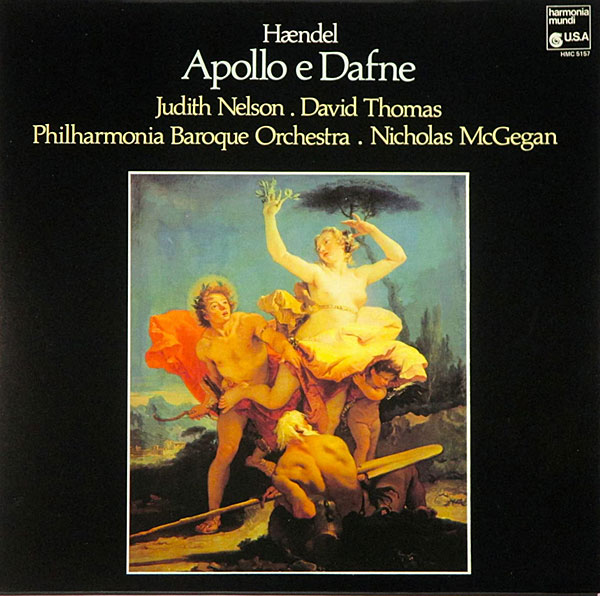
One recent acquisition is Handel's Apollo e Dafne, a 1985 release performed by the Philharmonia Baroque Orchestra (Harmonia Mundi USA HMC 5157) and recommended to me by Peter McGrath of Wilson Audio Specialties, its recording engineer, as we sat in the stands at the 2021 Abu Dhabi Formula One race (footnote 2). As the cars zoomed by on qualifying day, I went online on my phone and ordered the record on Discogs for not much money. There's something special about being halfway around the world and ordering a record that's waiting for you when you get home. Not sure what that something is, but it is something!
That minimally miked recording at Old St. Hilary's Church in Tiburon, California, produced a seamless, expansive spatial picture of the small wooden space constructed of redwood, with redwood doors and a Douglas fir ceiling. From the first warm, reverberant note, you'd know that the venue where the small ensemble (soprano, bass, flute, oboes, bassoon, strings, continuo) plays isn't made of stone.
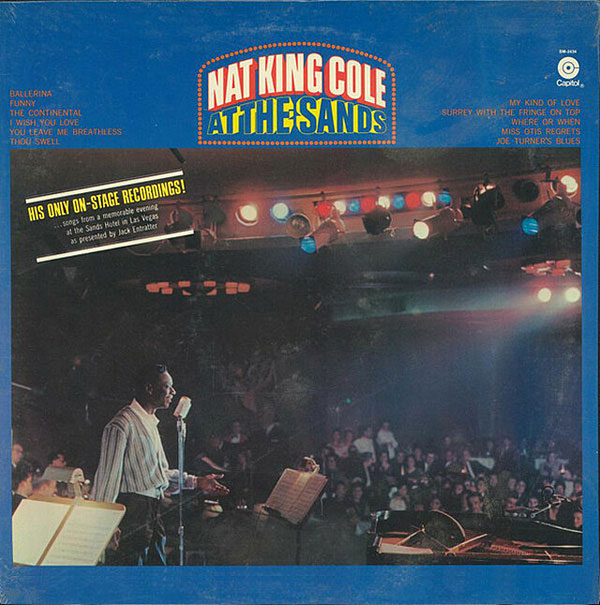
This recording sounds especially coherent through the solid state CH Precision P1/X1, but through the 128, the spaciousness was more spacious, the reverberant warmth was warmer, and the sense of effortlessly being in a three-dimensional space intensified, as did imaging verisimilitude. That experience had me unshelving Nat King Cole at the Sands (Capitol SMAS 2434), a recording I always thought was exciting but spatially and timbrally flawed, with vocal edge, brass harshness, and an overall metallic sound. It was recorded in 1960 but not released until after his death. I had low expectations going in.
I sat fully engaged in the entire after-hours concert, transported to the nightclub filled with Nat's celebrity friends—who couldn't attend the earlier shows because they were doing the same thing Nat was, at other Las Vegas nightclubs. Through the 128, Nat's cover of "I Wish You Love," a sonic and musical treat on which he's accompanied by lush strings on one side and mellow woodwinds, muted brass, and double bass on the other, sounded better than I'd ever heard it.
When I returned to the CH Precision, it was still far better than I'd ever heard it, because I last played this record years ago, and my system (especially my AC power) is much better than back then. But now, with the CH Precision, the delicate ether was diminished, as was the sense of room space. Nat's apparition between the speakers remained solid but drawn somewhat two-dimensionally, with harder sibilants. The piano's articulation was somewhat better, but the brass and reed sections had lost some luster and the strings had lost a lot of luster. The audience was flattened against the speakers.
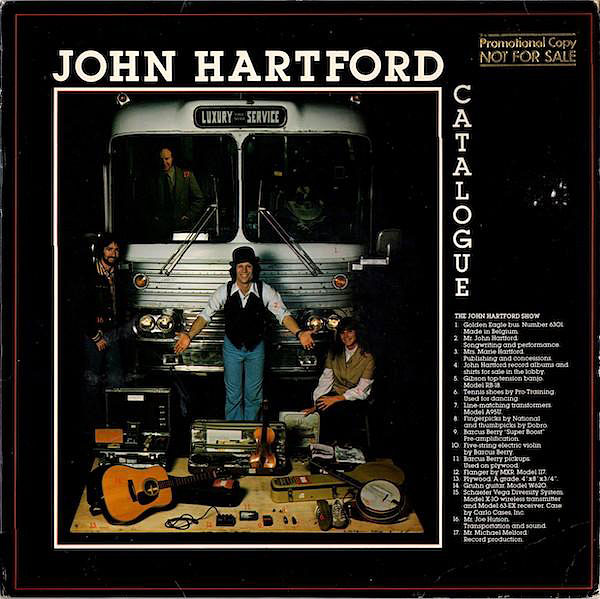
Do you know John Hartford's 1981 album Catalogue (Flying Fish 259)? I didn't know it either until AnalogPlanet writer Joseph Washek wrote about it. It's what the title suggests: a run-through of Hartford songs first performed on other albums, mostly for RCA, here recorded solo, direct to a two-track Scully tape recorder at 30ips using a few great microphones—it says so right on the jacket. Coincidentally, reverb effects were achieved with EMT plates. It's entertaining, eclectic, and sonically "you are there." Hartford plays banjo (of course), Dobro, fiddle, tennis shoes, and guitars through a variety of effects boxes, all of which are displayed on the cover, laid out in front of his tour bus.
Again, it sounded great through both preamps, but the 128 delivered more three-dimensionality and instrumental texture and more generous room sound. There's no bass on the record, so little was lost compared to the CH Precision, and plenty was gained. Not that it didn't sound really good—and punchier—through the CH Precision, because it did.
Another record I'd not played in years caught my mental attention: Bobby Vee Meets the Crickets (Sunset SLS 50357). (Bob Dylan gigged with teen idol Vee playing piano as Elston Gunnn, but that's another story for another time.) 15-year-old Vee and some friends filled in for Buddy Holly at a Moorhead, Minnesota, show Holly was flying to when his plane went down.
Engineered mostly by Eddie Brackett (who also engineered Dream with Dean among many other sonic greats), and originally released in 1962, this is Vee channeling Holly backed by the Crickets doing a few Holly tunes plus some Chuck Berry, a Roy Orbison, and a few others. It's pure, exuberant, well-recorded rock'n'roll.
This one sounded good through both phono preamps, especially on top, where the 128 delivered Jerry Allison's drum kit with all the crack and sizzle you could want, especially on "Well ... All Right," where he adds intense, chime-y percussive accents banging on what sounds like an anvil. It rocked better through the CH because of the taut, muscular bass, which the 128 softened somewhat.
Do I have to tell you which phono preamp produced more sonic magic on Sonatas for Two Violins (Columbia SAX 2531/ERC008) performed by Leonid Kogan and Elisabeth Gilels? People whine about ERC's prices, but an original of this one sold a few years ago for almost $7000! The CH Precision did a very good job with this one, but the 128 produced an incomparably silky, satiny, supple string finish. As on the John Hartford record, there's no bass content here, so no contest.
The Classic Records reissue of Shostakovich's The Age of Gold/Ballet Suite/Symphony No.1 (RCA LSC-2322), with Jean Martinon conducting the London Symphony Orchestra at Kingsway Hall, demonstrated the 128's rich, luxurious (but not oversaturated) timbral presentation, beginning with the round, woody clarinet figure and continuing through spectacular orchestral crescendos that revealed the 128's impressive dynamic presentation and, on percussive explosions, its unlimited high-frequency response and fast, precise transients more typical of the best solid state phono preamplifiers. This recording also showed that the bottom-end extension is there—you can hear a train or two rumbling through the Underground at the beginning of the Ballet Suite—it's just not as impactful as the CH Precision's bottom end.
Changing partners
I think you get the picture with the 128 paired with the EMT Novel cartridge. What about the 128 with the Madake Snakewood, which is fitted with a Shibata stylus? In the column where I reviewed the Snakewood (which by coincidence appeared on Stereophile's website the day I wrote this part of this review), I described the Snakewood's sound as "a meth-infused Madake. As good as the Madake is, the Snakewood was faster, leaner, cleaner, and a definite notch more transparent, without losing any of the Madake's coherent appeal." I noted its "smooth bandwidth and snappy bottom-to-top transient response free of hyper-edged detail." Which is just how the Snakewood sounded through the 128.
There's a section in the Shostakovich Symphony No.1 that features xylophone, wood block, strings, and woodwinds. It sounds like a traffic jam. The presentation was super snappy, detailed, transient-precise, fast, and yet 100% free of hyper-edged detail.
Side 2 of the Kogan-Gilels ERC record is Belgian composer Eugene Ysaòe's Sonata No.1 in C Major for two violins. Through the Snakewood, the string sheen of the two closely miked violins was hyper-real without ever turning hard or etchy. Especially in the lower registers, the instruments' hollowness was fully revealed. So fast and clean. I don't think I'd want to hear this recording digitized.
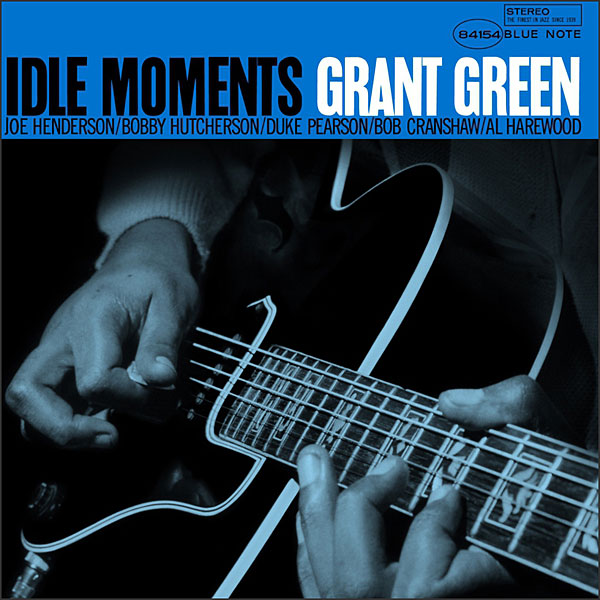
The Snakewood–EMT 128 proved to be a great pairing for jazz, too. This combination's rendering of Grant Green's Idle Moments (Blue Note Music Matters MMBST-84154) produced almost overwhelming textural richness and completeness on every instrument. Green's every pick-to-string touch became a fully realized event. Al Harewood's brushwork didn't sizzle—instead, it appropriately steamed, while Duke Pearson's piano exuded wood. Joe Henderson's sax was harmonically rich and fully saturated, and when Bobby Hutcherson entered center stage on vibraphone—round and full—it was almost too much for one set of ears to process.
It was like swapping out speakers. This was a totally different but equally valid and enticing presentation than that of the Ortofon Verismo into the CH Precision P1/X1. Rounder and fuller. This is what makes reproduced music and the opinions surrounding it so interesting and at times contentious. I could make a strong case for both versions.
Conclusion
The EMT 128 exudes elegance of design and execution, inside and out. Its sound, too, exudes elegance. It goes about its business without calling too much attention to itself, producing black backgrounds that the best solid state units would be proud of. (I'm prepared for measurement humiliation.) The 128 combines an essentially neutral timbral balance with pristine and seemingly unlimited high-frequency extension and glorious transient clarity that resolves fine detail, free of spotlighting. The tubes provide a kiss of pleasing harmonic structure, especially in the midrange—welcome warmth without thickness or veil.
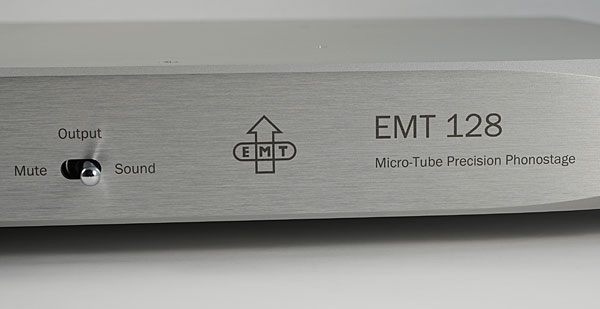
Some tube-based phono preamps shout "tubes." This one doesn't. Neither does the Ypsilon VPS100, which I own and use but left out of this review to avoid overcomplicating things.
Defects? Bottom-end transient slam is in short supply; that's really only an issue on electric rock. The 128's rendering of double bass on jazz and classical records sounded correct and satisfying in every way.
The EMT 128 is not for every audio system. It's made to work with moving coil cartridges with relatively high internal impedance and moderately low output. In today's low-output moving coil cartridge world, the lowest output voltages are usually achieved with fewer coil turns, which of course produces low internal impedance. The EMT 128 is made, is intended to work best with EMT cartridges. It worked wonderfully with the 0.26mV Miyajima Labs Madake Snakewood, but this was one of only two cartridges in my collection that fit the bill.
If you're interested in the EMT 128—and I don't blame you if you are—there's a line of excellent EMT cartridges with your name on them, and quite a few non-EMT cartridges that it will work well with. I've written more about one of those EMTs—the JSD Novel Titan, which I used (above) to audition the EMT 128 phono preamp—in this issue's Analog Corner.

I've worn them... VERY tight! Lol..

Another $12.000+ phono preamplifier with only 3.5 db overload headroom!
According to a Shure research, maximum recorded velocities on records reach 50 cm/sec.
http://pspatialaudio.com/shure%20velocities_enhanced.png
So a cartridge output with 5 mV@ 5 cm/sec will reach 50 mV/sec on peaks.
This means that absolute minimum of 20 db overload headroom is required. (MM or MC)

Hi
Per J.A. bench test report, 3.5dB@20KHz was test signal, not actual music signal picked up from the LP grooves. So you think a LP can deliver 20KHz music signals strong enough to overload the premp???? I doubt it very much.
Above said, the latest HD Vinyl is just around the coner. So 20KHz LPs is no longer some fancination.
Back in 2018, an Austrian startup invented a digtial mapping technology which digitally map the music signals into a 3D map which is then inscribed onto the vinyl stamper via lasers.
Yes, I think the HD Vinyl could theorettically be extended up to 20KHz. But would it sound as musical like its pure analogue format ?????? Or just another CD sound alike ?? Too early to tell now.
Unlike CD which adjust automatically its rotation speed to keep the laser linear veloicity constant, the tangential stylus speed (1.466666ft/sec) is not constant but varies as per the styuls location on the groove. Faster velocity near the edge of the LP.
From the design viewpoint, the low overload headroom of this preamp could be caused by too much gain caused by using 3 twin-pentodes in the signal path per channel, IMO. More gain would cause more 'pain' musically.
I would not use so many active devices for a phonostage considering SUT is already intalled for MC cartridge input.
Listening is believing
Jack L

Do you sincerely doubt an LP can deliver 20 kHz signal?
I am an engineer and I don’t doubt an LP can deliver 20 kHz.
Well, anyway,
Science does not rely on doubts, but facts.
Fact:
“The high-frequency response of vinyl depends on the cartridge. CD4 records contained frequencies up to 50 kHz. Frequencies of up to 122 kHz have been experimentally cut on LP records.” (wikipedia)
BTW, don’t forget RIAA recording curves boost high frequencies by up to 20 db (@20 kHz) as pre-emphasis. There are high amounts of high frequencies on records. During playback, RIAA de-emphasis by the phono preamplifier attenuates them. If it is not overloaded that is…. Groove surface noise is also attenuated accordingly in the process.
Even at 1 kHz, signal velocity can reach 30 cm/sec.
That will be 30 mVs for a cartridge with 5 mV@ 5 cm/sec output.
It means absolute minimum of 15.6 db overload headroom is required at 1 kHz.
At 1 kHz this phono preamplifier provides only 8.3 db overload headroom.
Now what? Would you claim you doubt an LP can deliver 1 kHz?
A fancy casework and price does not make a good phono preamp.
Good engineering does.
20 kHz on LP records was never a fascination. It is/was always there.
Forget about what you call HD LP. Such claims are probably already extinct as a dodo.
An LP is as good as it gets.

Hi
CD4 LP invented by JVC in 1970 but died in 1979 for good ! Yes, its carrier frequency is 45KHz for the L-R channels FM multiplex signals (30KHz centre). But not its audio frequenc spectrum which I asked you about any LPs.
FYI, the audio frquency response for the CD4 LP L+R channels: 30-15KHz & same for its L-R channel: 30-10KHz with poor channel separation. No wonder CD4 lasted only a few years before it folded up.
Music comes from musical instrument which produce music. Let's take them from classical music"
Soprano 250Hz-1KHz (high enough to break a glass), Baritone 110-425Hz,
Top piccolo 630 - 5KHz. Clarinet B flat/A 125Hz-2KHz.
So tell me what musical instrument can generate 20KHz strong enough to
overload any preamp ???
BTW, HD Vinyl is a new startup invention to replace conventional cutter with laser to cut the stamper. It is the lastest revoluatinary vinyl invention, pal.
More to tell you, Mr. Engineer later as it's late now. I got to go now.
Jack L
PS: FYI, I'm an electrical engineer with dacades involvement in electrical power industries. My hobbyis DIY audio electronics.

Do you claim 20-5000 Hz frequency response is all there is and all it takes for hi-fi music reproduction?
Name of the game is harmonics. Cymbals for example, go way beyond 20 kHz.
If that is not enough,
“******** recording ******* RIAA curve” boosts high frequencies before cutting the record by 20 db!!!! (10 times)!!!! at 20 kHz! ************
************ Shure Company data state there are incredible amounts of signal peaks at 20 kHz on records. **************
This preamp can’t meet the absolute minimum overload headroom specs at any frequency either.
************ I have written all these facts before… Don’t you read or can’t you process what you read? *************
I mentioned CD4 only because you claimed LP records can’t reach 20 kHz. They do, and much beyond to ultrasonic frequencies! And you said 20 kHz is a “fascination” :) that what you call “HD records” will provide. Remember?
Don’t you understand what you read?

Hi
Slow down & take a breath! Mr. Engineer ! Don't get heart attack ! Mr. Engineer.
I said before I closed my last post to you last nite:
"More to tell you, Mr. Engineer later as it's late now. I got to go now." Obviously you did not read it, right?
Please don't put yr words in my mouth: I never claimed 20-5KHz is "all it takes for hifi music reproduction" !! You've jumped the gun before I can carry on with my explanation here now !
Yes, you are correct about the higher orders of harmonics above the fundamental frequencies of a vocal & a music instrument.
According to Neumann, Berlin, "the origin of all studio microphones", Taking reference of human voice: 200-8KHz, any frequencies above 6kHz - 20KHz are high orders of harmonics, in form of brilliance & air. What we hear sibilances & harshness lie between 6-8KHz.
20KHz is the high frequency audio standard for audio equipment. Not the frequency response of vocals & musical instruments that produce the music. Please differentiate the difference. We listen to music live/reproduced not sinewaves used in any bench tests. Don't mix up as they are totally different: apple vs orange.
My question to YOU in my first post to you was: "So you think a LP can deliver 20KHz music signals strong enough to overload the premp???? I doubt it very much." I stated very clearly to you: "music signals", not sineweave/squarwave test signals used in bench tests.
So YOU still ASSUME musical instruments with fundamentals up to 5KHz can overload any preamp with their high frequency harmonics up to 20KHz !!
So I hereby ask you again: which sopranos/tenors & musical instrument can deliver 20KHz high frqeuncy strong enough to overload any preamp ???
I can tell you: NONE !
Yes, you stated your fact of bench test standard not musical standard.
You obviously fail to know the differnece.
You quoted the JVC CD4 audio frequency "fact" is fake: only 30-15KHz max. Read again CD4 facts before you quote, OK ?
HD Vinyl, not "HD reccords" you wrongly assumed, is a proprietry trademark of a very new Austrian startup with million-dollars funds for this 3D musical signal mapping sofeware invention to replace convention chisel to cut record stamper with lasers. This company held a seminar in
Berlin only last year to demonstrate the sound effect of the 3D mapping software.
I talk facts with published references, not fake news on assumption.
Listening is believing
Jack L

I see that you posted a message, but deleted later.
You are thinking in terms of FLAT frequency response.
But LP records are not recorded with flat frequency response.
I see that I have to be more specific…
PRE-EMPHASIS is applied BEFORE cutting and DE-EMPHASIS is applied WHEN LISTENING.
This is done according to RIAA curves.
https://en.wikipedia.org/wiki/RIAA_equalization
1. Before cutting an LP, BASS frequencies are ATTENUATED by as much as [-]20 db at 20 Hz and TREBLE frequencies are BOOSTED by as much as [+]20 db at 20 kHz. So if you listen to LP records without applying DE-EMPHASIS, you’ll hear that it is SATURATED with TREBLE frequencies, especially around 10-20 kHz, which you’ll see below at the Shure graph.
Do you understand so far? (Capisci?)
2. The Shure graph of maximum recorded velocities found on commercial music records on the market: https://2.bp.blogspot.com/-T97Unt0UZK8/WIPt3X3bfMI/AAAAAAAAAI0/KY9inlOQ3n8j6TTwbcIlWhwkSvjqCbL-QCLcB/s1600/record%2Bwrap%2Bvs%2Baudible%2Bfrequencies.jpg
As you can see, AT BASS, there are not much high level velocities.
MOST OF THE ENERGY is around 10-20 kHz.
3. BTW, this phono preamp does not meet absolute minimum overload headroom at 1 kHz either. You had replied, “but it has improved” (with respect to 20 kHz overload headroom). But your message was deleted. Overload headroom at 1 kHz was so low to begin with, not enough is not an improvement!
I don’t care what you “doubt”!
Do you understand so far? (Capisci?)
If not, I feel sorry. But I can’t do anything for you. You have to see a doctor.

Hi
Don't yr words in my mouth again! I never think the way YOU think what I think. Moot assumption again !!!!!
RIAA is not flat frequency response. This is vinyl ABC, even high school kids know it.
You keep on talking about RIAA equalization & Shure. Please tell us more informative on vinyl, Mr Engineer !
RIAA is a standard for manufacturers to design/build phono-preamps for sale, to provide a RIAA playback curve with transition points:
75uS (2,122Hz), 318Us (500Hz) & 3180Us (50Hz) = 20Hz (+20dB). 1KHz (0dB) & 20KHz (-20dB) so that the vinyl music can be theoretically played back flat from 20Hz to 20KHz.
It is a vehicle which convey the recorded vinyl music back to flat frequency response standard : 20Hz - 20KHz.
It does not mean music recorded in a vinyl record MUST get music contents with 20KHz high frequency response.
But YOU assume all music recroded in a vinyl gets 20KHz like sinewave bench test signals. This is incorrect. Human voices & musical instrument with highest orders of harmonics do not delivery 20KHz strong enough to overload any preamp, period!
"MOST OF THE ENERGY is around 10-20 kHz"
Substantiate your above statement with published data, Mr Engineer.
I understand every word you claim. I "doubt" you still undertand what I just posted here.
YOU don't have to do anything for me. You need to see an engineering doctor to improve your knowledge in audio engineering.
Jack L

I always associate EMT with pro audio so I do miss the rackmount look of JPA-66 preamp. This audio jewelry look trend is never my cup of tea.